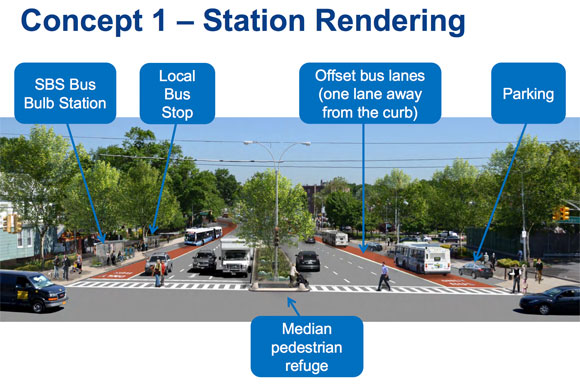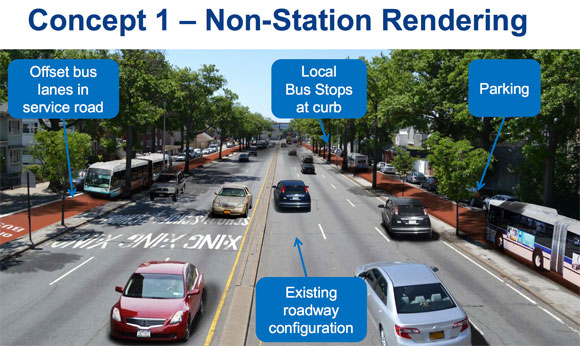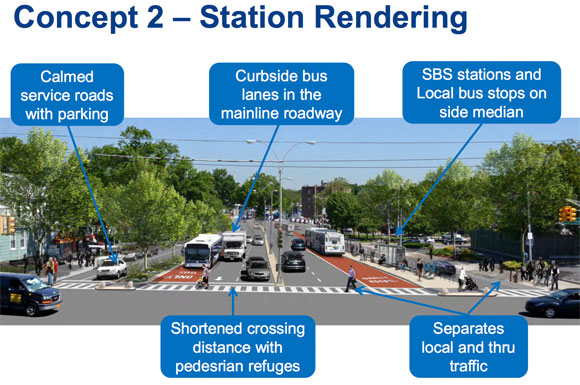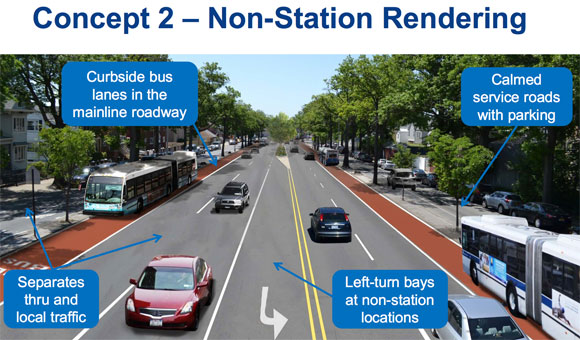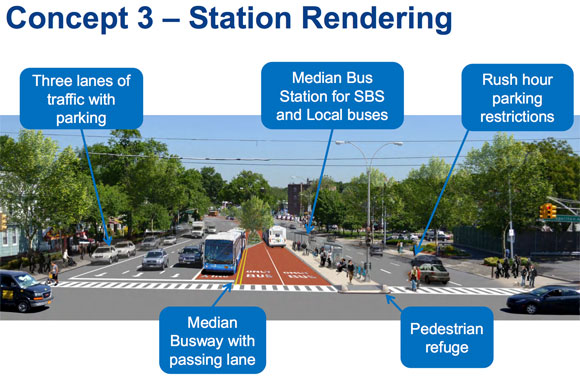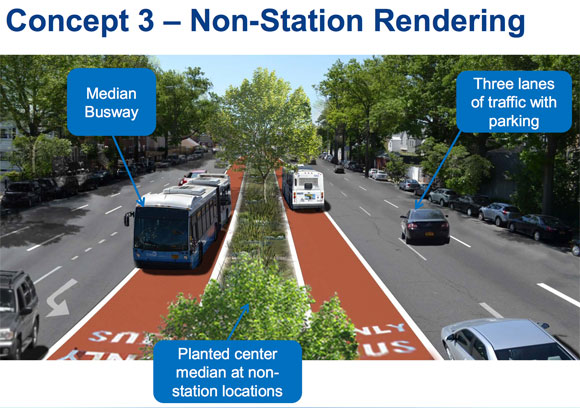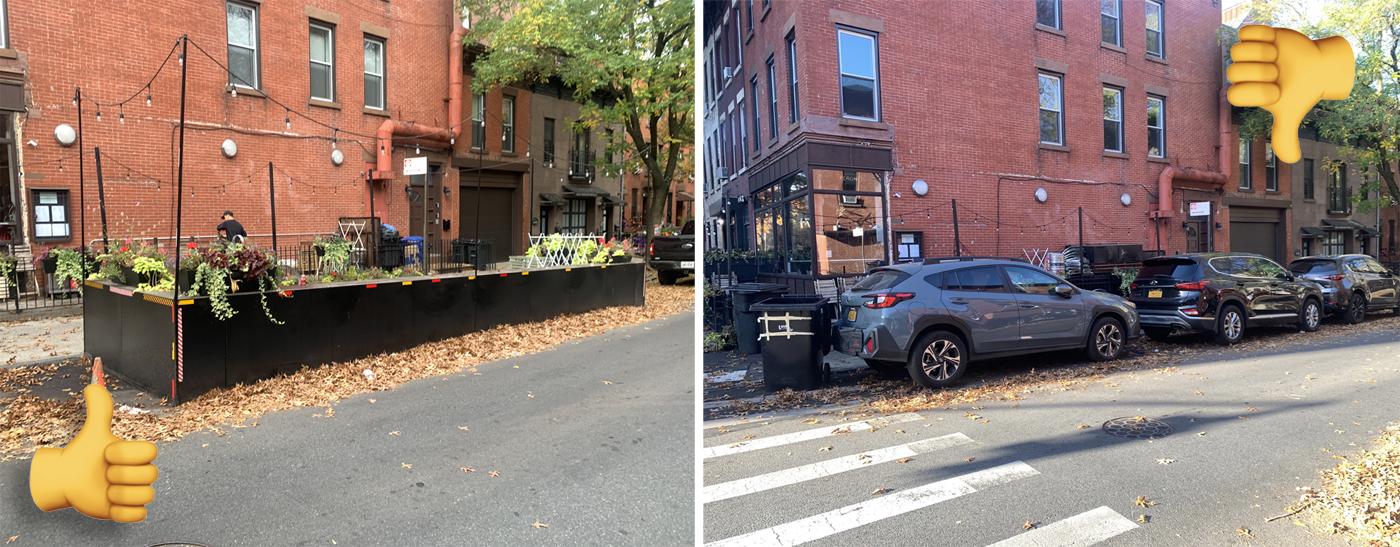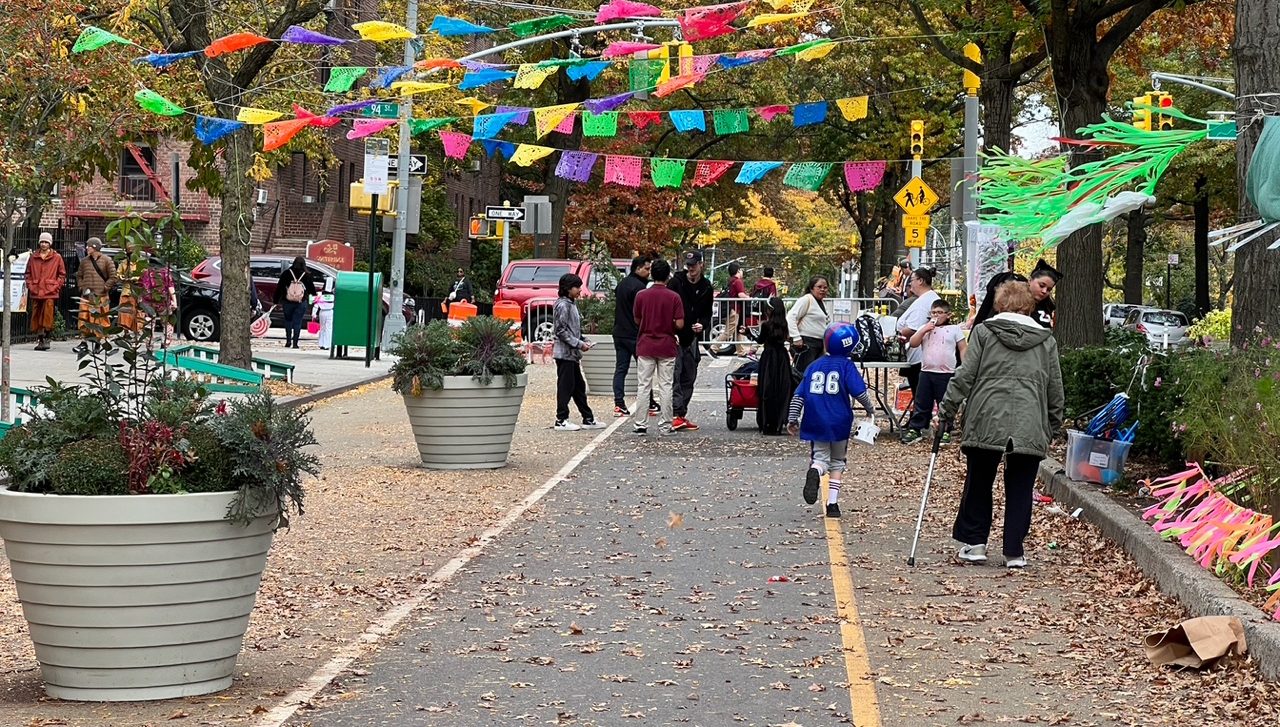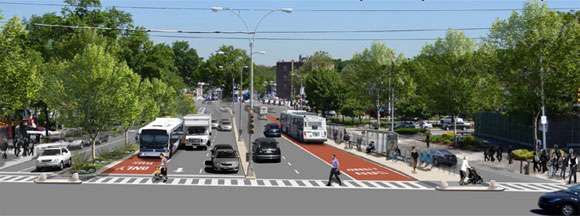
NYC DOT and the MTA have developed three design concepts for Select Bus Service on Woodhaven Boulevard and Cross Bay Boulevard in southeast Queens, and two of them go further than previous SBS routes to keep cars from slowing down buses [PDF]. All of the options include some measures to shorten crossing distances for pedestrians on one of the city's widest and most dangerous streets.
The Woodhaven SBS project, which covers a 14.4-mile corridor running from the Rockaways to Woodside, is the biggest street redesign effort in NYC right now. All the City Council members along the route have said they want big changes, and the concepts on display last night indicate that DOT and the MTA can deliver.
Agency representatives showed the three designs at an open house in Ozone Park where residents could leave written comments on posterboards. City Council Member Eric Ulrich told me he liked what he saw, and bus riders and transit advocates were especially keen on "Concept 2" and "Concept 3," which would create clearer paths for buses. Here's a rundown of how each option would work.
Concept 1 is the closest design to previous SBS routes, with buses running in an "off-set" lane removed from the curb by a parking lane. At intersections, the sidewalk would widen at bus stops, and an island in the center refuge would cut crossing distances in half. On some blocks, between intersections, a concrete divider would separate the bus lane from through traffic. While this would keep some cars from violating the bus lane, it would also mean buses would share the lane with vehicles accessing the curb.
In Concept 2, the buses would run in a dedicated lane next to through traffic, not on the service road. This would keep deliveries, parallel parkers, and turning vehicles out of the path of buses -- a significant step up from current SBS routes that run next to the curb or in off-set lanes, which leads to conflicts between buses and vehicles accessing the curb. This design also includes two pedestrian islands at intersections, cutting down on crossing distances.
Concept 3 puts the bus lanes in the center of the street, minimizing potential interference from car traffic. Since the MTA would not be purchasing left-door buses to run on this route, bus stops would not be on a center median but instead to the right of the bus. Because this design calls for a passing lane where SBS buses can pass local buses, not as much street space is set aside for sidewalk extensions and pedestrian islands as in the other two designs.
All of the concepts include the standard suite of SBS features like off-board fare collection and enable local buses to use the dedicated transit lanes. They all include three general traffic lanes in each direction as well.
Woodhaven and Cross Bay are currently a jumble of different configurations, with a confusing array of service lanes and concrete medians that shift along the route. Concept 1 would involve the least amount of change to the existing roadway and could be implemented the fastest. The other two designs would entail tearing up more of street and would take longer to build out, potentially stretching into 2017.
Ulrich, who has emerged as a big supporter of the project, said Concept 1 would be the easiest for his constituents to digest but was also intrigued by Concept 3. If bus stops can safely be located on islands in the street, he said, he could get behind the center-running bus lane design.
With the first phase of the Woodhaven project slated to paint bus lanes along two relatively short stretches, Ulrich clearly wants to do more to address the high level of injuries and deaths along the corridor, as well as the delays for both bus riders and motorists. "Whatever we're doing now obviously isn't working," he said. "I don't want to see them put down red paint and then they walk away."
The transit advocates and bus riders in the audience last night saw more appeal in Concept 2 and Concept 3. Joan Byron of the Pratt Center for Community Development said that at first blush, Concept 2 looks like the best choice, combining good separation for bus traffic with calmer service roads that, while lacking bike lanes, would not be terrifying to bike on.
Emily December, 23, a student at Queens College who takes the bus from her home near Atlantic Avenue, agreed that Concept 2 looked the safest. Drivers frantically shifting lanes are a major problem on the corridor, she said, interfering with all traffic, including buses, and she thinks Concept 2 would be the best way to impose consistency and order. She also preferred the location of bus stops in that design, which would drop riders off next to a service lane instead of a through lane, as in Concept 3.
Riders whose top priority is to create the clearest possible path for buses preferred Concept 3. Phillippe Pierre, 24, lives in Rosedale and takes the bus to get to the Queens Center Mall and the beach. "I like Concept 3 because it keeps the buses out of traffic," he said. Another advantage, said Glendale resident Toby Sheppard Bloch, is that Concept 3 "offers the possibility of separation and makes clearer who goes where."
Last night's open house was the latest in a series of public meetings DOT and the MTA have held on the project. Detailed designs, including tough problems like how to deal with pinch points where the roadway narrows, have yet to be hashed out. The next step, said DOT's Eric Beaton, is to take these three rough concepts and start laying them out on a block-by-block basis. Expect to see the next iteration of the project designs early in 2015.
